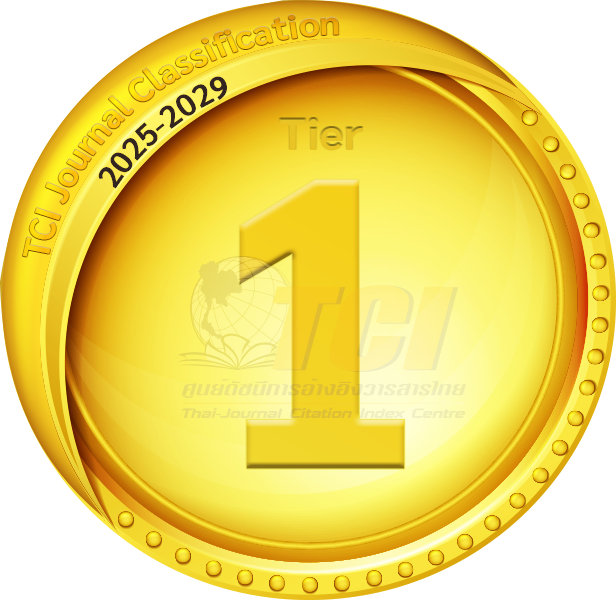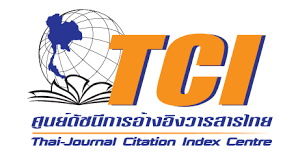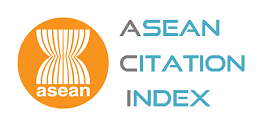A Model of Factors Affecting Work Motivation of Civil Servants: An Evidence from Public Department in Vietnam
- Nhat Khanh Le, Graduate School of Public Administration, National Institute of Administration Development, Bangkok, Thailand
- Boon Anan Phinaitrup, Graduate School of Public Administration, National Institute of Administration Development, Bangkok, Thailand, Corresponding author, E-mail: khanhnhat2110@gmail.com
Abstract
In the centuries of globalization with continuous changes, all organizations especially public institutions are facing various challenges of pleasing citizens’ requirements with better and efficient public services. To be able to offer the best possible services, these public institutions have to concentrate on the unique resource, fostering an institution to blossom and accomplish their missions--the human resources. The government of Vietnam has put a lot of effort into administration reform; however, the consummation and achievement of the Vietnam Public Sector are still appraised below par because of the inferior performance of public employees. This article aims to illustrate factors affecting the work motivation of public employees in Vietnam by collecting data from 187 civil servants using the non-probability sampling technique to provide evidence. Results from the PLS-SEM model using SmartPLS 3.0 program revealed the finding of the study that there is a significant effect of two factors decreasing motivation, namely work conditions and supervisor support. In this research, the authors also suggest various managerial implications for leaders and managers to uplift the work motivation in the workplace of employees.
Keywords: work motivation, public department, civil servants
DOI: 10.14456/rjsh.2022.3
References
Akkermans, J., de Lange, A. H., van der Heijden, B. I. J. M., Kooij, D. T. A. M., Jansen, P. G. W., & Dikkers, J. S. E. (2016). What about time? Examining chronological and subjective age and their relation to work motivation. Career Development International, 21(4), 419-439.
Ali, R., & Ahmed, M. S. (2009). The impact of reward and recognition programs onemployee’s motivation and satisfaction: An empirical study. International Review of Business Research Papers, 5(4), 270-279.
Arabi, S. M., & Kamani, S. H. (2000). Investigating the impact of job security and individual staff’s factors. Journal of Management and Development Process, 14(2), 87-93.
Armstrong, M., & Taylor, S. (2017). Armstrong's handbook of human resource management practice. London, UK: Kogan Page.
Asegid, A., Belachew, T., & Yimam, E. (2014). Factors influencing job satisfaction and anticipated turnover among nurses in Sidama Zone public health facilities, South Ethiopia. Nursing Research and Practice, Article ID 909768, 1-26.
Bagraim, J. J., & Hime, P. (2007). The dimensionality of workplace interpersonal trust and its relationship to workplace affective commitment. SA Journal of Industrial Psychology, 33(3), 43-48.
Barzoki, A. A., Attafar, A., & Jannati, A. R. (2012). An analysis of factors affecting the employees motivation based on Herzberg's hygiene factors theory (The study: Golpayegan City Saipa Corporation industrial complex's staff). Australian Journal of Basic and Applied Sciences, 6(8), 115-123.
Behn, R. D. (1995). The big questions of public management. Public Administration Review, 55(4), 313-324.
Černe, M., Nerstad, C. G. L., Dysvik, A., & Škerlavaj, M. (2014). What goes around comes around: Knowledge hiding, perceived motivational climate, and creativity. The Academy of Management Journal, 57(1), 172-192.
Chintalloo, S., & Mahadeo, J. D. (2013). Effect of motivation on employees’ work performance at Ireland Blyth limited. Proceedings of 8th Annual London Business Research Conference Imperial College, London, UK.
Dublin, T. (1995). Transforming women's work: New England lives in the industrial revolution. New York, US: Cornell University Press.
Ducharme, L. J., & Martin, J. K. (2000). Unrewarding work, coworker support, and job satisfaction: A test of the buffering hypothesis. Work and occupations, 27(2), 223-243.
Edgar, F., & Geare, A. (2005). HRM practice and employee attitudes: different measures – different results. Personnel Review, 34(5), 534-549.
Flynn, G. (1998). Is your recognition program understood?. Workforce, 77(7), 30-35.
Fornell, C., & Larcker, D. F. (1981). Evaluating structural equation models with unobservable variables and measurement error. Journal of marketing research, 18(1), 39-50.
Garson, G. D. (2016). Partial least squares: Regression & structural equation models. Asheboro, US: Statistical Associates Publishing.
Gerber, P. D., Nel, P. S., & Dyk, P. S. V. (1998). Human Resource Management. Oxford, UK:Oxford University Press South Africa.
Giao, H. N. K., & Vuong, B. N. (2019). Giáo Trình Cao Học Phương Pháp Nghiên Cứu Trong Kinh Doanh Cập Nhật SmartPLS (No. fkv4q). Virginia, US: Center for Open Science.
Hackman, J. R., & Oldham, G. R. (1974). The Job Diagnostic Survey: An instrument for the diagnosis of jobs and the evaluation of job redesign projects. Retrived form https://eric.ed.gov/?id=ED099580
Hair, J. F., Anderson, R. E., Babin, B. J., & Black, W. C. (2010). Multivariate data analysis: A global perspective (Vol. 7). London, UK: Pearson.
Hammer, L. B., Kossek, E. E., Yragui, N. L., Bodner, T. E., & Hanson, G. C. (2009). Development and validation of a multidimensional measure of family supportive supervisor behaviors (FSSB). Journal of management, 35(4), 837-856.
Harrison, K. (2013). Employee recognition is important: Here’s how to do it well. Retrived form https://cuttingedgepr.com/employee-recognition-important/
Henseler, J., Ringle, C. M., & Sarstedt, M. (2015). A new criterion for assessing discriminant validity in variance-based structural equation modeling. Journal of the academy of marketing science, 43(1), 115-135.
Herzberg, F. (1968). One more time: How do you motivate employees? Harvard Business Review, 46(1), 53-62.
Huczynski, A., & Buchanan, D. A. (1991). Organizational behaviour-An introductory text (2nd ed.). Prentice Hall (UK) Ltd., 436-466.
Hunter, P. E. (2006). Viability of job characteristics model in a team environment: Prediction of job satisfaction and potential moderators ((Doctoral Dissertation). University of North Texas, Texas, US.
Irons, J. G., & Buskist, W. (2008). Preparing the new professoriate: What courses should they be ready to teach? Teaching of Psychology, 35(3), 201-204.
Juhdi, N. S. A. J., & Saad, H. S. (2007). Use of technology, job characteristics and work outcomes: A case of UNITAR instructors. International Review of Business Research Papers, 3(2), 184-203.
Khan, N., Waqas, H., & Muneer, R. (2017). Impact of rewards (intrinsic and extrinsic) on employee performance with special reference to courier companies of city Faisalabad, Pakistan. International Journal of Management Excellence, 8(2), 937-937.
Kivimäki, M. V. P., & Koskinen, P. (1995). Job enrichment, work motivation, and job satisfaction in hospital wards: testing the job characteristics model. Journal of nursing management, 3(2), 87-91.
Kovach, K. A. (1987). What motivates employees? Workers and supervisors give different answers. Business Horizons, 30(5), 58-65.
Kuhnert, K. W., Sims, R. R., & Lahey, M. A. (1989). Relationship security employee. Group & Organization Studies, 14(4), 399-410.
Lee, C.W., & Kusumah, A. (2020). Influence of supervision on employee performance with work motivation as an intervening variable. Review of Integrative Business and Economics Research, 9, 240-252.
Miller, D., & Lee, J. (2001). The people make the process: Commitment to employees, decision making, and performance. Journal of Management, 27(2), 163-189.
Muhammad, G. (2012). Determinants of employee motivation - A case study of Afroze textile industries limited, Karachi, Pakistan. IOSR Journal of Business and Management, 4(3), 22-25.
Nzuve, S. N. (1999). Elements of organizational behavior. Nairobi, Kenya: University of Nairobi Press.
Perry, J. M., & Wise, L. R. (1990). The motivational basis of the public service. Public Administration Review, 50(3), 367-373.
Richmond, V. P., & McCroskey, J. C. (2000). The impact of supervisor and subordinate immediacy on relational and organizational outcomes. Communication Monographs, 67(1), 85-95.
Robbins, S. P. & Judge, T. A. (2018). Essential Organizational Behavior (14th ed.). London, UK: Pearson Education Limited.
Sajjad, A., Ghazanfar, H., & Ramzan, M. (2013). Impact of motivation on employee turnover in telecom sector of Pakistan. Journal of Business Studies Quarterly, 5(1), 76-92.
Saleem, R., Mahmood, A., & Mahmood, A. (2010). Effect of work motivation on job satisfaction in mobile telecommunication service organizations of Pakistan. International Journal of Business and Management, 5(11), 213-222.
Sharafinski, J. L. K., & Clare, E. (1988). Measuring perceived superiory and organization support. Educational and Psychological Measurement, 48(4), 1075-1075.
Spector, P. E., & Jex, S. M. (1991). Relations of job characteristics from multiple data sources with employee affect, absence, turnover intentions, and health. Journal of Applied Psychology, 76(1), 46-53.
Susskind, A. M., Kacmar, K. M., & Borchgrevink, C. P. (2003). Customer service providers’ attitudes relating to customer service and customer satisfaction in the customer-server exchange. Journal of Applied Psychology, 88(1), 179-187.
Vuong, B. N., & Sid, S. (2020). The impact of human resource management practices on employee engagement and moderating role of gender and marital status: An evidence from the Vietnamese banking industry. Management Science Letters, 10(7), 1633-1648.
Wong, K. K. K. (2013). Partial least squares structural equation modeling (PLS-SEM) techniques using SmartPLS. Marketing Bulletin, 24(1), 1-32.
Yazdani, B. O., Yaghoubi, N. M., & Giri, E. S. (2011). Factors affecting the empowerment of employees (an empirical study). European Journal of Social Sciences, 20(2), 267-274.

Indexed in


Search